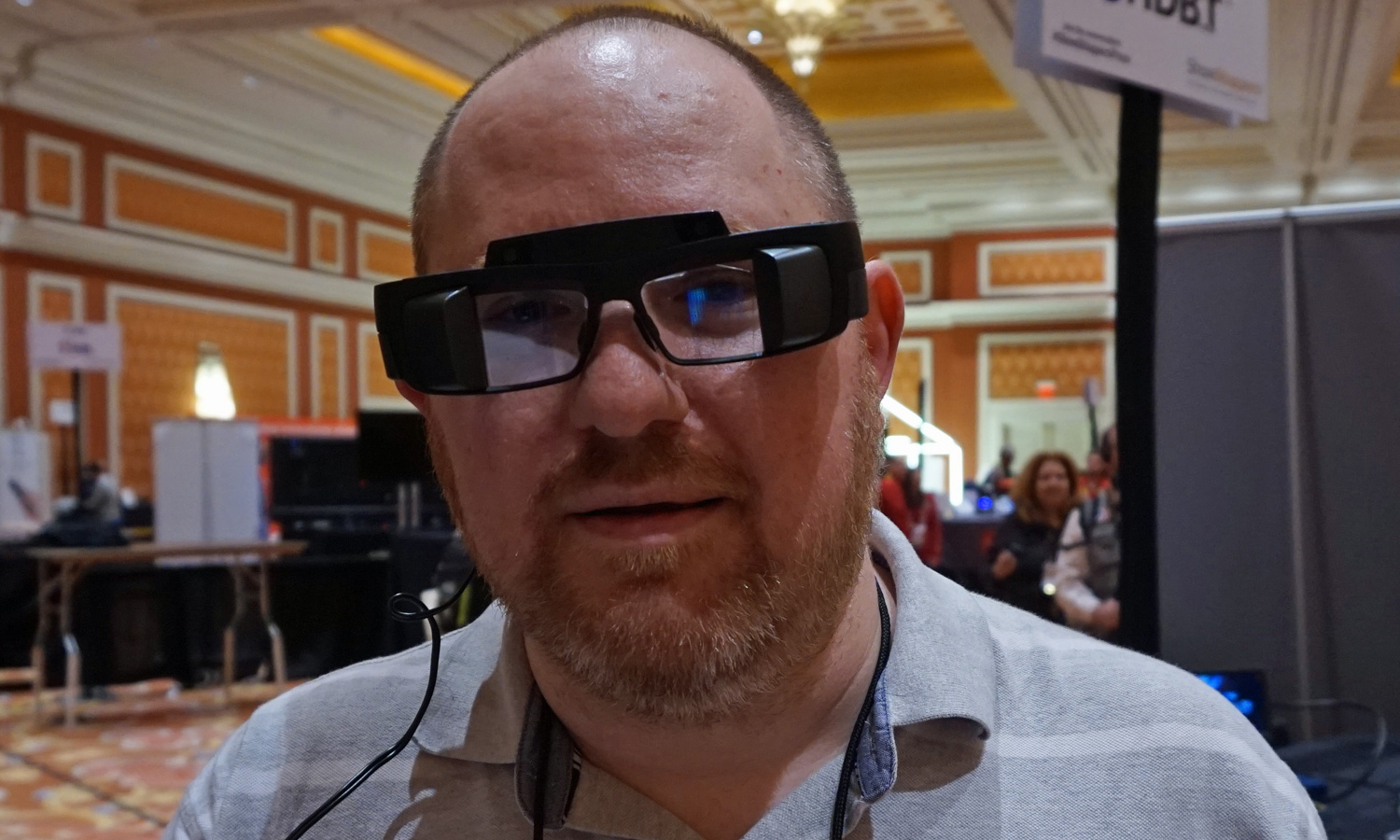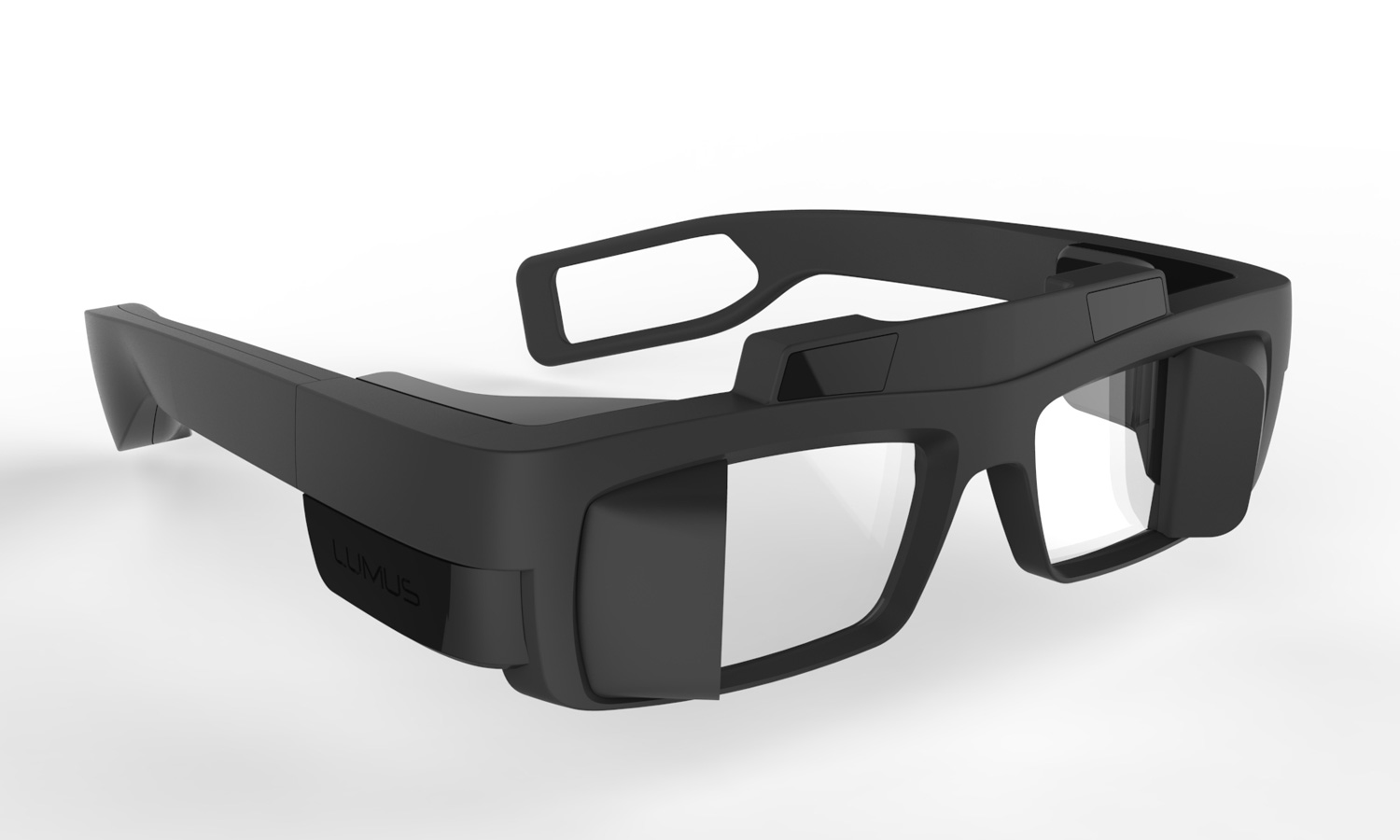New Augmented Reality Goggles More Immersive Than HoloLens
Lumus' DK-50 augmented reality glasses offer a much wider field of view and brighter images than Microsoft's upcoming HoloLens headset.
LAS VEGAS — For augmented reality to be really effective, it needs to be immersive. That's why Google Glass, with its tiny eyebrow-facing screen, was so uninspiring, and the binocular Microsoft HoloLens has so much promise.
However, in our hands-on with the HoloLens, we noted that its virtual images didn't cover our entire field of view, which broke the illusion when we peered outside of a relatively narrow window in the center of the lenses.
Enter Lumus, a company that designs high-end optical engines for smartglass vendors and military clients. At CES 2016, the Israeli tech vendor unveiled its DK-50 developer kit, a pair of binocular glasses that produces the widest field of view and most vibrant augmented-reality graphics we've ever seen.

I had a chance to don the DK-50 and was blown away by the quality of the images, which appeared to float right in front of my face. Lumus representatives ran a demo which alternated between a map of the solar system and a human rib cage rotating in 3D. The images seemed both more solid and closer to my face than they would have on the HoloLens and, better still, they remained visible even when I peered out of the corners of my eyes or gazed up or down.
The DK-50 offers a 40-degree field of view, which, according to Lumus reps, is about double what the HoloLens offers. Each eye has a full 720p resolution.
The glasses will run Android on a Qualcomm Snapdragon processor. To help detect the world around it, the DK-50 will have dual stereo cameras and an Inertial Measurement Unit (IMU), which allows for real-time mapping and tracking.

In its press release, the company says that its glasses use a technology called InfinityAR marker-less tracking to help achieve the impressive output. With Lumus' lenses and the right applications, virtual objects could be difficult to distinguish from the real-world furniture, walls and people around the wearer.
However, Lumus is not a software company, and it's not interested in taking on Google or Microsoft. When it ships sometime later this year, the DK-50 will cost around $3,000 and be targeted specifically at developers. Company reps said the goal is to encourage more application development and show hardware vendors what's possible when you have high-end optics technology. Hopefully, some of the key players will take notice and step up their games.
Sign up to get the BEST of Tom's Guide direct to your inbox.
Get instant access to breaking news, the hottest reviews, great deals and helpful tips.
-
kryzstoff The view may be brilliant from the inside, but looking like Ghostbusters Ecto Googles, these aren't going to be on any self-respecting geeks' wishlist anytime soon. At least HoloLens and GoogleGlass gave a little consideration to the outside appearance.Reply -
Rico Alexander Well, at least we can see that full immersion is possible. Hopefully MS can incorporate their tech or just buy them outright.Reply -
moontube With the occluding elements on the sides of the spectacles frame, it's hard to see how this can be called significantly more immersive than HoloLens. It appears that there is more vertical FOV, but horizontally it does not look to be much better. Also, you cannot tell how immersive an experience is from a ten minute demo. The brain needs more time than that to adjust to the new reality. Wear a HoloLens for an hour and then see how immersive it feels to you. I was pretty satisfied even after a brief ten minute demo.Reply
